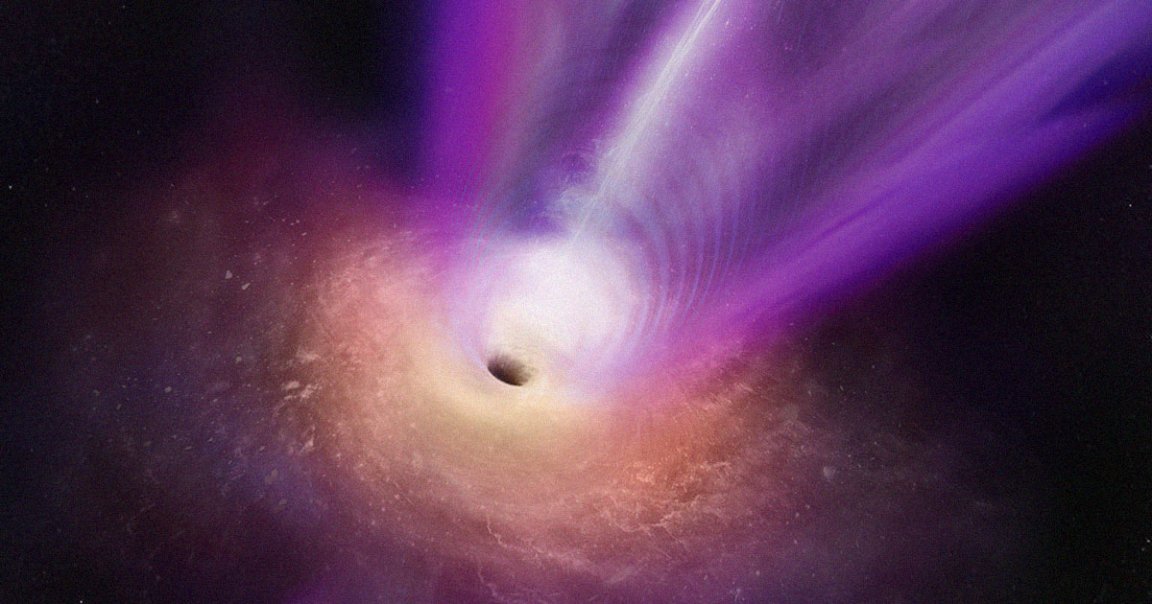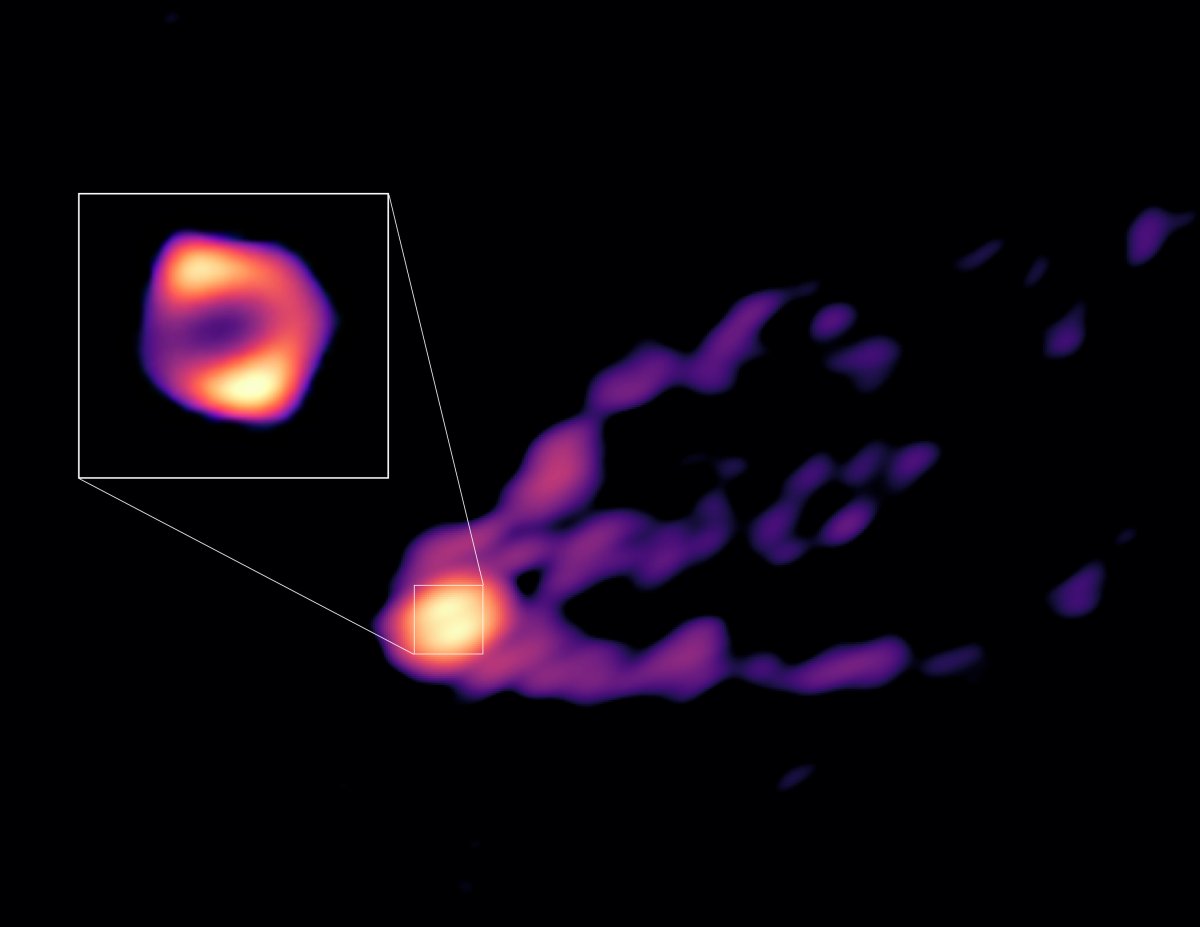
For the first time, astronomers have captured the powerful jets spewing out of a black hole and the black hole itself in the same image. Until now, they’d only been able to capture them in separate images.
As detailed in a new paper in Nature, the image shows the supermassive black hole at the center of the galaxy Messier 87, also known as M87, and was put together using 2018 data collected by telescopes across the world, including the Atacama Large Millimeter/submillimeter Array (ALMA) in Chile.
Astronomers combined data from these telescopes to form one virtual Earth-sized telescope with the use of a technique called interferometry, which synchronizes their signals.
Black holes like the one lurking at the center of M87 can shoot giant jets of matter far beyond the edges of their host galaxies. The scale is truly mind-boggling. The galaxy that hosts the black hole is roughly 55 million light-years away, and M87 itself is a whopping 6.5 billion times more massive than our Sun.

But how black holes like this one shoot out these jets is a process that is still a big mystery — which the new image might help unravel.
“We know that jets are ejected from the region surrounding black holes,” said coauthor Ru-Sen Lu from the Shanghai Astronomical Observatory in China in a statement, “but we still do not fully understand how this actually happens. To study this directly we need to observe the origin of the jet as close as possible to the black hole.”
The image builds on a previous image of the same black hole, which was taken by the Event Horizon Telescope back in 2017 and released in 2019. The new image, however, shows M87’s black hole at a much longer wavelength.
“At this wavelength, we can see how the jet emerges from the ring of emission around the central supermassive black hole,” said co-author Thomas Krichbaum of the Max Planck Institute for Radio Astronomy, in the statement.
As a result, the new observation shows that the ring-like structure surrounding the black hole is around 50 percent larger compared to the one in ETH’s 2017 image. The astronomers believe that’s due to more of the material falling towards the black hole being visible in the new observations.
For now, the team says they’re only getting started.
“We plan to observe the region around the black hole at the center of M87 at different radio wavelengths to further study the emission of the jet,” said coauthor Eduardo Ros from the Max Planck Institute for Radio Astronomy.
That means we could get an even more intricate look at the various processes taking place in the black hole’s vicinity.
“The coming years will be exciting, as we will be able to learn more about what happens near one of the most mysterious regions in the Universe,” Ros added.
More on M87: Bad News! That Image of a Black Hole Might Be Totally Screwed Up